Analog sound is all about warmth, depth, and natural character; the kind of tone that makes recordings actually feel alive.
It’s what gives classic records their smooth, rich quality, with just the right amount of saturation, harmonic distortion, and subtle imperfections.
In a digital world, it’s easy for tracks to sound too clean or sterile, but the right analog emulation plugins bring back that depth and warmth people love.
It just… works.
That’s why I’m breaking down the best analog emulation plugins across all processing effects, each packed with features that help capture that authentic sound, like:
- Authentic tape sound/saturation & harmonic drive ✓
- Smooth tube-style preamp warmth & console coloration ✓
- Vintage EQ curves that shape frequencies naturally ✓
- Punchy analog compression that glues a mix together ✓
- Lush plate and spring reverbs with realistic reflections ✓
- Tape-style delays & echoes with rich, evolving decay ✓
- Subtle wow, flutter & pitch drift for natural movement ✓
- Customizable signal paths that mimic real studio chains ✓
- Soft-clipping & natural analog-style limiting ✓
- Much more ✓
Knowing all about the best analog emulation plugins can help you add some serious warmth to vocals, tighten up drums, and shape dynamics (naturally).
Plus, bring that killer organic, analog-style movement to your mix 一 all without needing racks of expensive outboard gear, which is awesome.
You’ll be able to smooth out harsh digital edges, glue your mix together, and get that classic, polished sound that feels professional.
Table of Contents
- #1. Soundtoys Decapitator (Saturation/Distortion)
- #2. Waves SSL G-Master Buss Compressor (Bus Compression)
- #3. Universal Audio EMT 140 (Reverb)
- #4. Waves J37 (Tape Saturation)
- #5. Universal Audio 1176LN (Compression)
- #6. Soundtoys PhaseMistress (Chorus/Flanger)
- #7. Eventide MicroPitch (Pitch Shifting)
- #8. Waves SSL G-Equalizer (Equalization)
- #9. Soundtoys EchoBoy (Delay)
- #10. Waves Scheps Omni Channel 2 (Channel Strip)
- Final Thoughts
#1. Soundtoys Decapitator (Saturation/Distortion)
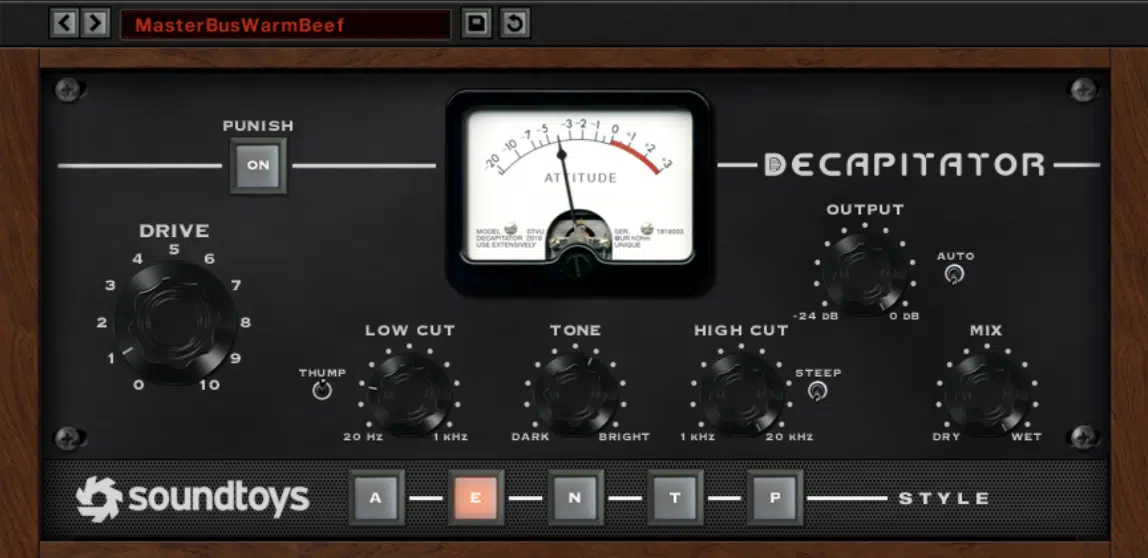
The Soundtoys Decapitator is one of the best analog-style saturation and distortion plugins for adding warmth, grit, and character to your individual tracks.
It’s built to replicate the sound of real analog gear, from smooth console-style saturation to extreme tube-driven distortion.
A huge part of what makes it special in my opinion is the five distinct saturation models (A, E, N, T, and P), each emulating a different piece of classic hardware.
For example, the ‘E’ model is based on classic Neve preamps, perfect for adding warmth to vocals, while the ‘N’ model gives you tape-like saturation that’s great for drums and bass.
The Drive knob is the heart of Decapitator though because it controls just how much saturation or distortion gets applied.
If you lightly push it on a drum bus, it adds a nice analog crunch, but cranking it up on a bass guitar creates epic harmonic overtones (just like slamming an old tube preamp).
The Tone knob is another great one for shaping your high-end and low-end response to dial in the exact vibe you’re looking for.
For example, rolling off the highs makes an aggressive distorted guitar sound warmer and more vintage, while boosting the highs gives a vocal more bite.
One of the best features is the Punish button, which adds an extra 20dB of gain 一 turning this into a full-on distortion monster, which I personally love.
If you want drums to explode out of the speakers or a bassline to have a gritty, overdriven feel, the Punish mode delivers serious analog-style destruction.
There’s also a Mix knob, which lets you blend the saturated signal with the dry one for parallel saturation.
A killer trick for getting dirty, aggressive drums without losing the original punch.
Decapitator doesn’t just mimic distortion… It captures the way real hardware reacts to audio, making it one of my favorite plugins for bringing analog life into any digital mix.
Why It’s One of the Best Analog Emulation Plugins:
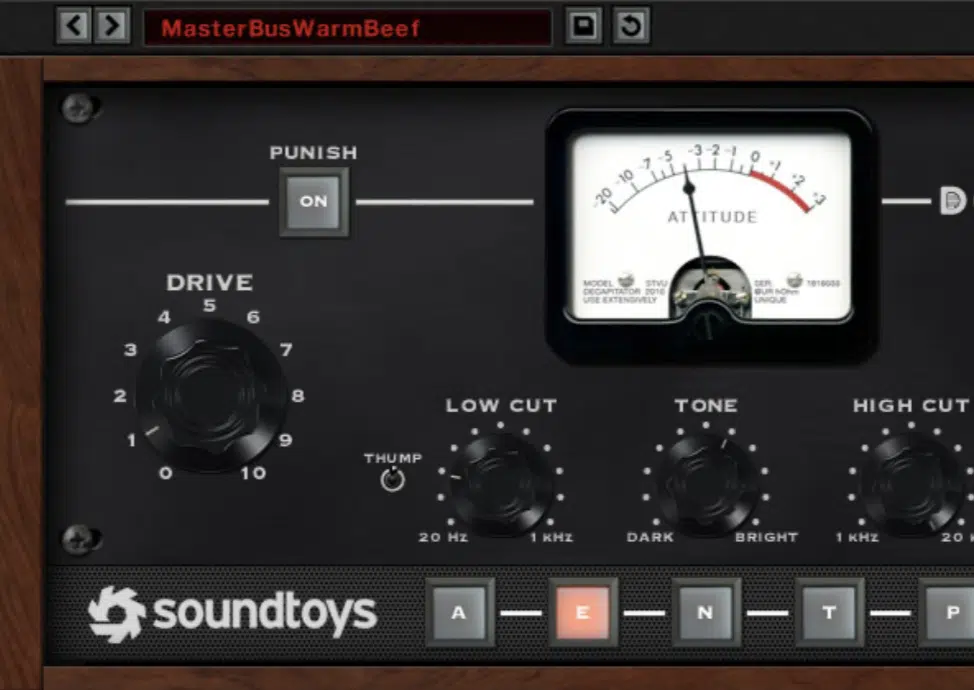
- Five analog saturation models (A, E, N, T, P), each based on legendary hardware
- Drive control adds everything from light saturation to extreme distortion
- Tone knob lets you shape the sound, rolling off or boosting highs and lows
- Punish button pushes an extra 20dB for intense distortion effects
- Mix knob makes it easy to blend saturation with the original signal for parallel processing
- Perfect for adding warmth and aggression to vocals, drums, bass, and synths
- One of the best analog emulation plugins around
#2. Waves SSL G-Master Buss Compressor (Bus Compression)
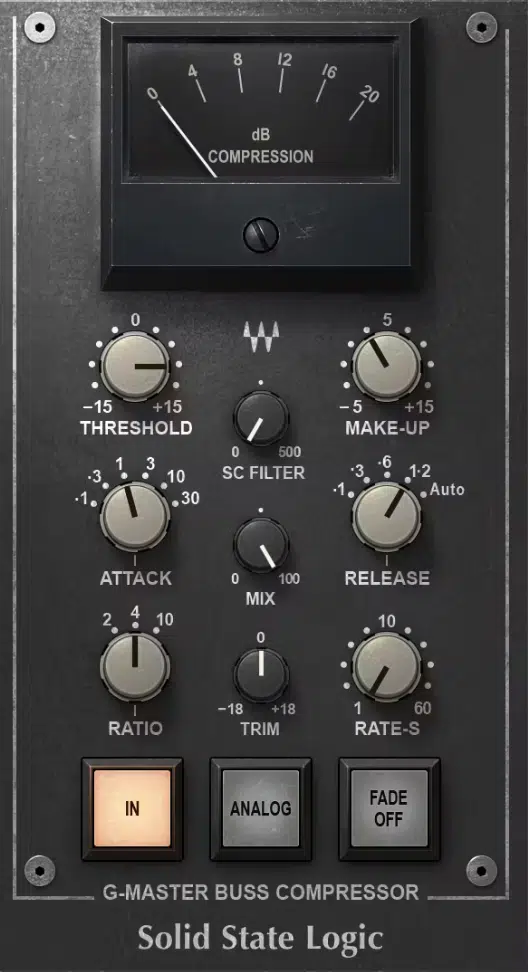
The Waves SSL G-Master Buss Compressor is a spot-on emulation of the famous SSL 4000 G console compressor.
It’s perfect for gluing mixes together and adding punch and clarity all day.
This is the compressor that gives mixes that polished, “radio-ready” sound by subtly controlling dynamics while keeping everything natural.
The three classic ratio settings (2:1, 4:1, and 10:1) let you control how much compression is applied.
For example, using 2:1 on a full mix gently smooths things out, making the track sound tighter without losing its energy, while 4:1 on a drum bus can add punch and impact.
The Attack and Release controls are where the real magic happens, with super-fast attack times (as low as 0.1ms) for taming transients.
Or, slower settings for more natural compression of course.
For instance, a slow attack on a piano track allows the transients to breathe, while a fast attack on a vocal group smooths out peaks.
One of the best features is the Auto Release mode 一 it adjusts dynamically to the audio so the compression stays super smooth and musical.
This is great for master bus compression because it reacts differently to loud and soft sections, preventing unnatural pumping.
Another huge plus is the Sidechain High-Pass Filter, which stops the compressor from reacting too much to low-end frequencies.
If you’re compressing a full mix, activating the high-pass at 100Hz ensures the kick and bass don’t make the compressor overreact so everything is on point/tight.
The Mix knob makes it easy to blend compressed and uncompressed signals for parallel compression, a technique that adds energy while keeping dynamics intact.
For example, setting the mix to 50% on a drum bus lets you keep the attack of the original drums while still benefiting from the compression’s punch.
It’s no wonder this compressor has been used on thousands of records.
Bottom line, if you’re looking for that classic SSL glue, look no further because this is one of the best analog emulation plugins in the game, hands down.
Why It’s One of the Best Analog Emulation Plugins:
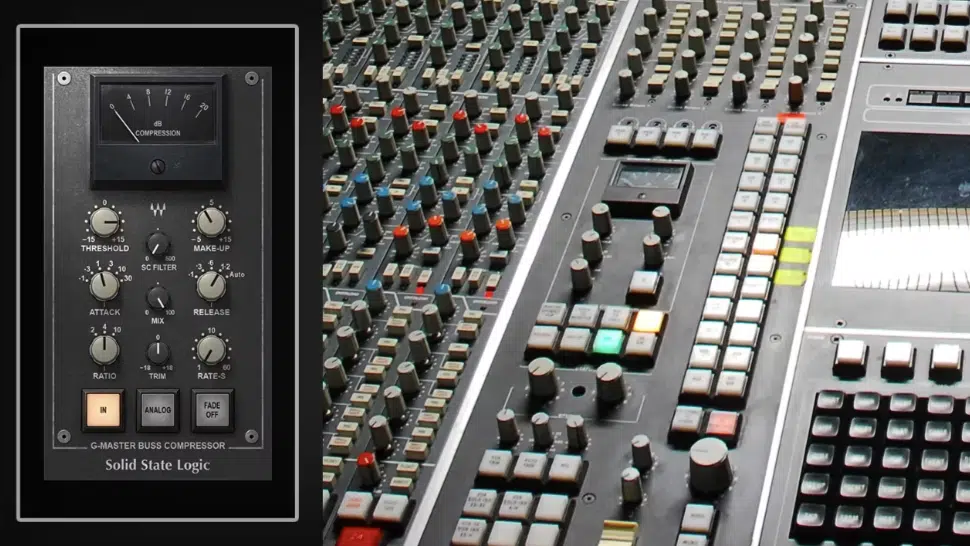
- Faithful emulation of the SSL 4000 G console bus compressor
- Classic 2:1, 4:1, and 10:1 ratio settings (incredibly versatile compression control)
- Adjustable Attack and Release times, with Auto Release
- Great for master bus compression
- Sidechain High-Pass Filter
- Mix knob allows for easy parallel compression for punchy, controlled mixes
- Perfect for glueing mixes together, adding punch to drums, or controlling dynamics
- One of the best analog emulation plugins around
#3. Universal Audio EMT 140 (Reverb)

The Universal Audio EMT 140 is hands-down one of the best plate reverb emulations out there.
It perfectly captures the metallic, smooth, and warm sound of the original EMT 140 plate reverb unit from the late ’50s.
Unlike modern digital reverbs that can sound sterile, this one adds a super lush, organic space to sounds 一 giving vocals, guitars, and drums a very professional finish.
One of the best things about it is the three distinct plate models, each with a different tonal character.
For example, Plate A has a brighter, more open sound, so it’s great for adding airy presence to vocals.
Plate C, on the other hand, is darker and warmer, so it’s perfect for thickening up drums and synths.
The damping control lets you shape the decay of the reverb, so if you want a long, lush tail for an atmospheric vocal or a tight, snappy room feel for drums.
It’s super easy to dial in the perfect setting with it.
The pre-delay function is another lifesaver when working with busy mixes because it lets you create a small gap between the dry signal and the reverb.
It keeps lead instruments upfront while still getting that big plate ambiance.
For example, adding a 50ms pre-delay on a vocal lets it cut through without the reverb washing it out (just like engineers used to do with hardware delays before sending signals to plate reverb units).
There’s also a high-pass filter to clean up muddy low-end buildup, which is great on full mixes where you want the reverb to sit smoothly without interfering with bass and kick.
When it comes to modulation, it gives the reverb a more natural movement 一 simulating the slight inconsistencies that a real plate reverb would have as it vibrates.
For example, using just a touch of modulation on a snare reverb makes it feel more alive, which prevents the reverb tail from sounding static, so that’s another plus.
When it comes to the best analog emulation plugins for plate reverb, this is an absolute must-have, for sure.
You’ll get that legendary, warm, analog-style depth heard on classic records so your mixes feel polished and expensive every single time.
Why It’s One of the Best Analog Emulation Plugins:
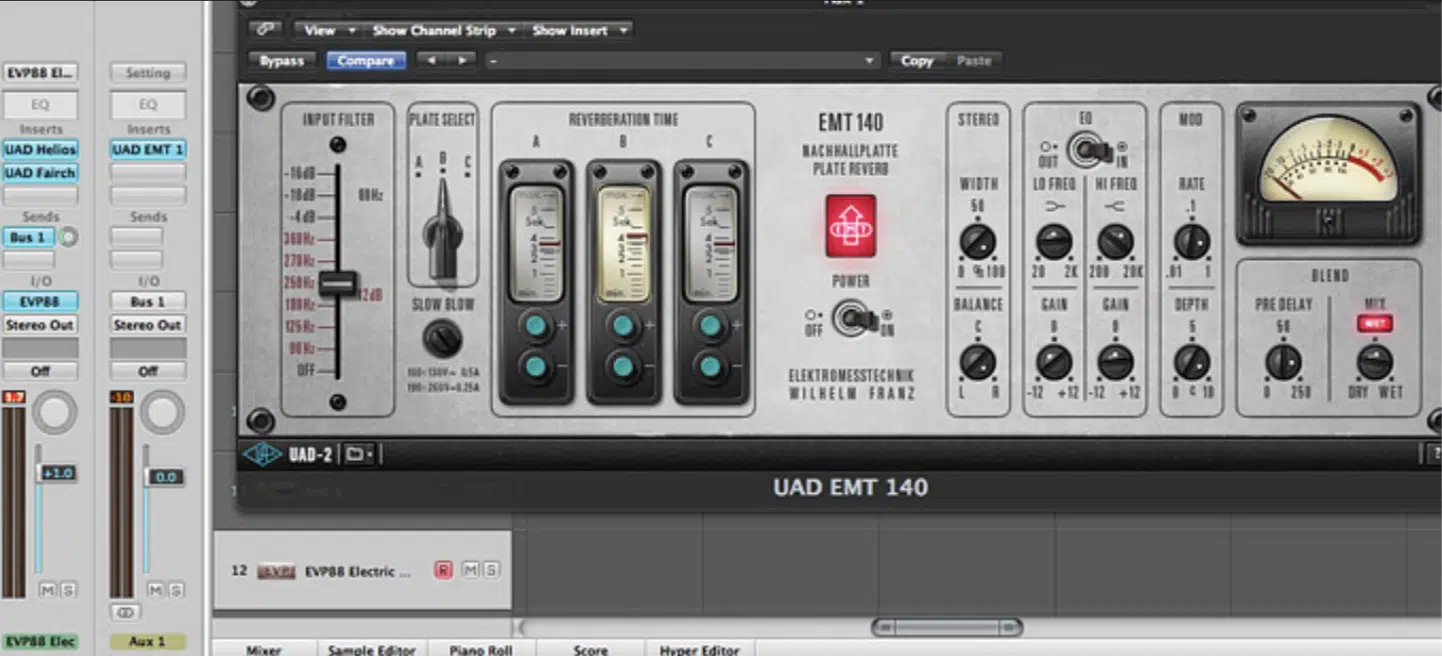
- Emulates the legendary EMT 140 plate reverb with three unique plate models
- Damping control lets you shape the reverb decay for tight or lush tails
- Pre-delay function ensures lead instruments stay upfront in the mix
- High-pass filter prevents muddy low-end buildup for cleaner reverb tails
- Modulation section adds natural movement, mimicking real plate reverb variations (perfect for a more analog vibe)
- Perfect for vocals, guitars, drums, and synths, adding warmth and space
- One of the best analog emulation plugins around
#4. Waves J37 (Tape Saturation)
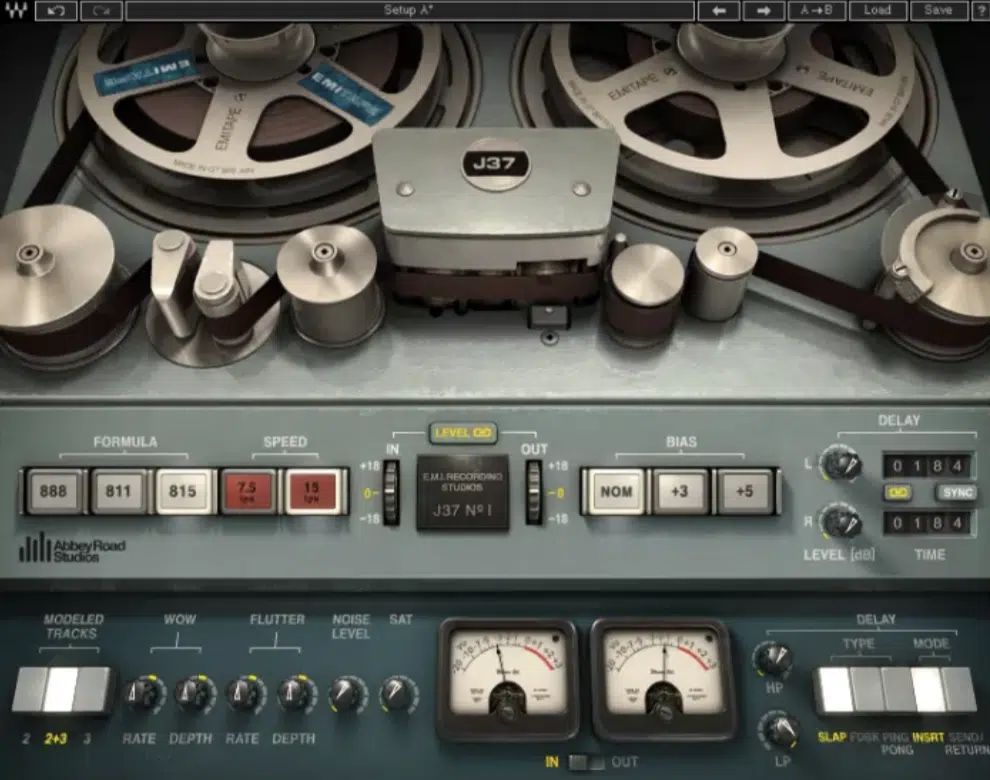
Waves J37 is a faithful emulation of Abbey Road Studios’ legendary Studer J37 tape machine, delivering:
- Authentic tape saturation
- Subtle harmonic enhancement
- Compression
It’ll give your digital mixes the feel of real analog tape (hence why it’s one of the best analog emulation plugins in the game).
Unlike digital recordings that can sometimes feel cold or too clean, it adds that classic tape warmth and glue, which makes everything sound more cohesive/natural.
The tape speed control is a key part of shaping the sound.
15 ips gives a brighter, more detailed tone, while 7.5 ips boosts low-end warmth with more harmonic saturation.
For example, setting 7.5 ips on a bass guitar can thicken the low end, while using 15 ips on vocals keeps the top-end clear and smooth, just like real tape machines would.
The bias control is another game-changer, letting you fine-tune the tape saturation by adjusting the headroom and harmonic distortion.
Pushing the bias higher adds extra harmonics and a slight compression effect 一 making drum loops sound punchy and glued together.
Lowering it, on the other hand, will give you a more open, dynamic response (great for acoustic instruments).
The wow and flutter controls introduce slight pitch inconsistencies that mimic real tape sound/playback, which is a killer trick for adding organic movement to synth pads or lo-fi piano recordings.
For example, dialing in just a touch of wow and flutter on an electric piano can make it sound like it was recorded straight to an old-school tape deck.
If you’re looking for that nostalgic, vintage vibe, you got it right here.
On top of that, there’s a built-in tape delay section, which can be used for slapback echoes, filtered dub-style delays, or rhythmic repeats with authentic tape character.
For example, setting the delay time to around 120ms with a slight high-end roll-off instantly gives you that old-school rock ‘n’ roll slapback used on classic Elvis vocals.
The saturation control is where things really shine though…
It lets you push the input harder to get that warm, natural tape compression, which is absolutely perfect for fattening up drum busses, thickening up guitars, or making an entire mix feel more glued together.
All in all, if you’re after the warm, slightly imperfect magic of real tape, the J37 delivers on all levels, truly.
Why It’s One of the Best Analog Emulation Plugins:
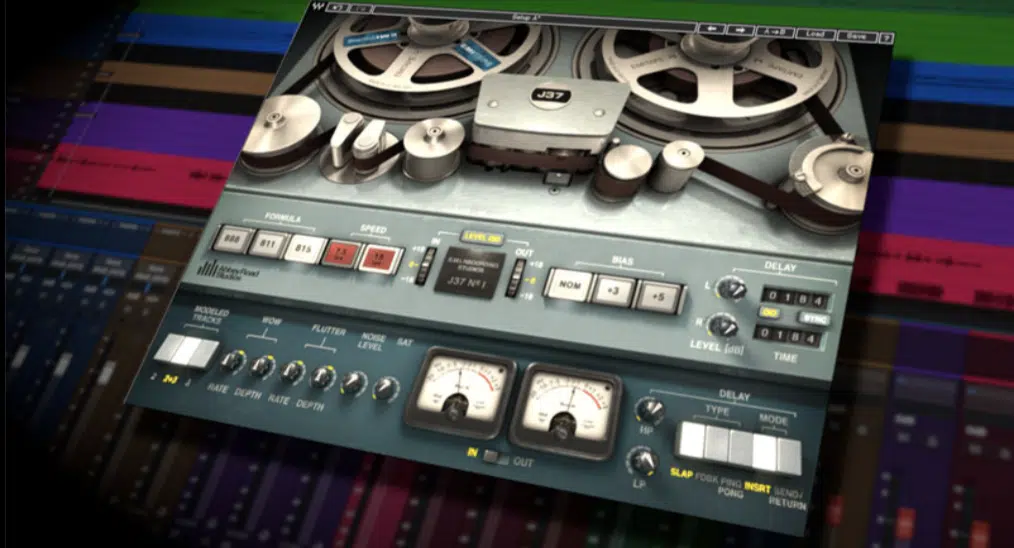
- Accurate tape emulation of the legendary Abbey Road Studios J37 tape machine
- Selectable tape speed options (tape speed: between 7.5 ips and 15 ips)
- Bias control lets you fine-tune harmonic saturation and tape emulation/compression (perfect for subtle or aggressive saturation)
- Wow and flutter introduce natural pitch inconsistencies for organic movement
- Built-in tape delay section for slapback, dub echoes, and rhythmic delays
- Saturation control
- Perfect for adding analog glue, warmth, and depth
- One of the best analog emulation plugins around
#5. Universal Audio 1176LN (Compression)
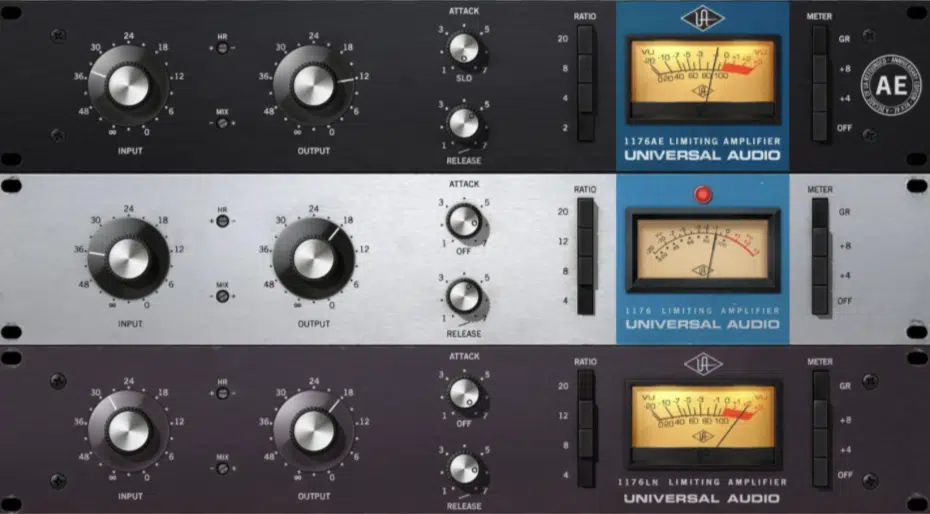
The Universal Audio 1176LN is an iconic FET compressor that brings the fast, punchy dynamics of classic analog hardware into modern music production.
Unlike slow, smooth optical compressors, the 1176 reacts almost instantly, with attack times as fast as 20 microseconds (crazy, right?).
It’s perfect for:
- Tightening up drums
- Adding grit to bass
- Making vocals cut through a dense mix
For example, setting a fast attack with a medium release on a snare drum makes it punch through without sounding overly squashed, just like the classic drum processing in analog recordings.
One of its most famous features is the All-Buttons-In mode, where pressing all ratio buttons at once creates a wild, aggressive compression effect.
With extra harmonic distortion, I should add.
If you want a vocal to sound huge and aggressive, this setting is perfect 一 it pushes transients in a way that makes the performance feel larger than life.
The input and output gain work together to control how much saturation you introduce, which is a key part of why this compressor sounds so warm and realistic.
Driving the input harder adds subtle harmonic enhancement, just like an actual hardware unit would when pushed into saturation.
NOTE: While it’s famous for smashing drums and adding energy to mixes, dialing in subtle settings can also add an airy, polished quality to vocals.
This makes them sit in the mix like they were recorded through real outboard gear.
The release time is super important, as setting it fast on a vocal makes the compressor breathe in time with the track, just like an old-school analog console.
If you’re looking for the fast, punchy, harmonically rich compression heard on thousands of hit records, the 1176LN is one of the best choices around.
Why It’s One of the Best Analog Emulation Plugins:
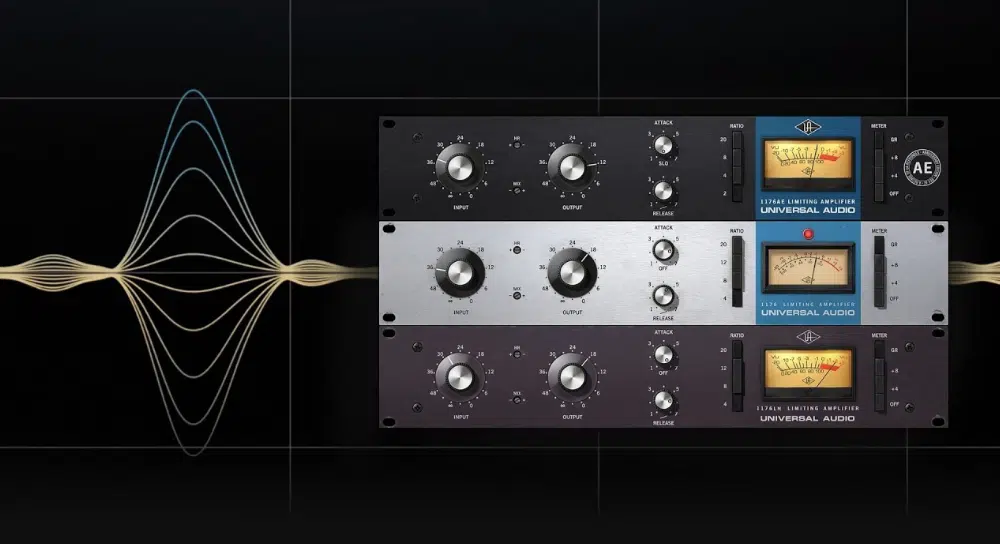
- Ultra-fast attack times (as fast as 20 microseconds) for aggressive transient control
- All-Buttons-In mode introduces harmonic distortion and a pumping, explosive effect
- Input gain drives the compressor into rich analog saturation, just like real hardware
- Perfect for vocals, drums, and bass, giving them energy and presence
- Release timing can be set to “breathe” with the track, just like an experienced mix engineer would do on a console
- Classic analog sound heard on countless hit records
- One of the best analog emulation plugins around
#6. Soundtoys PhaseMistress (Chorus/Flanger)

The Soundtoys PhaseMistress brings the warm, swirling movement of classic analog phasers into a modern DAW, capturing the unpredictable character of vintage hardware.
Unlike digital phasers that sound static, it offers 69 different phasing styles… yes, you read that correctly: 69 different phasing styles!
Each one is modeled after legendary units like the MXR Phase 90 for smooth, creamy sweeps or the Bi-Phasefor deep, resonant movement.
The Tweak menu gives full control over the:
- Number of stages
- Resonance
- Modulation
It lets you dial in everything from subtle shimmer to extreme, psychedelic sweeps.
For example, increasing the resonance on a synth pad can recreate the rich, liquid-like phase of an old-school analog rack unit.
A built-in modulation section includes LFO, rhythm, envelope, and random modes, so the phase effect reacts dynamically to the audio, just like real hardware would.
For example, applying envelope modulation to a drum loop makes the phase sweep tighten with each snare hit, adding rhythmic movement that feels organic.
Custom LFO shaping lets you design your own modulation curves, so you can knock out evolving phasing effects that go way beyond traditional analog equipment.
All while still retaining that unmistakable warmth, which is what you’re aiming for.
And yes, it has a mix control, so you can easily blend in just the right amount of phase without drowning out the original signal.
This is great for adding subtle movement to lead vocals without making them sound too processed (it does an incredible job, honestly).
Whether you’re after funky, vintage-style phase on guitars or edgy stereo width/motion on synths, PhaseMistress brings that unmistakable analog depth and color to any mix.
If you love the sound of classic hardware phasers but want the flexibility of modern control, this is one of the best ways to get that sound inside your DAW.
Why It’s One of the Best Analog Emulation Plugins:
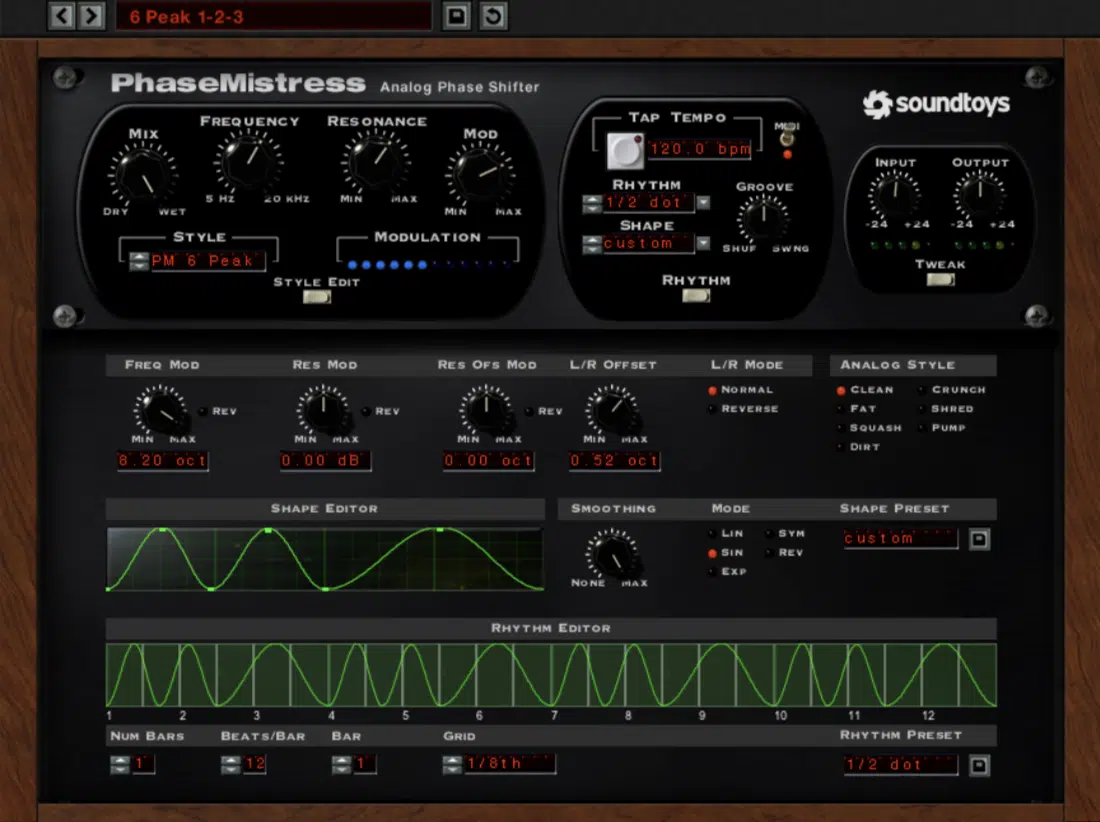
- 69 phasing styles modeled after legendary analog phasers like the MXR Phase 90 and Bi-Phase
- Full control over phasing parameters, including number of stages, resonance, and modulation
- Built-in modulation with LFO, envelope, and rhythm-based phase shifting for dynamic movement
- Custom LFO shaping lets you design your own modulation curves for unique effects
- Mix control blends the wet and dry signal, perfect for subtle enhancements or deep phase sweeps
- Excels at adding warmth and movement to guitars, synths, drums, and vocals
- One of the best analog emulation plugins around
#7. Eventide MicroPitch (Pitch Shifting)
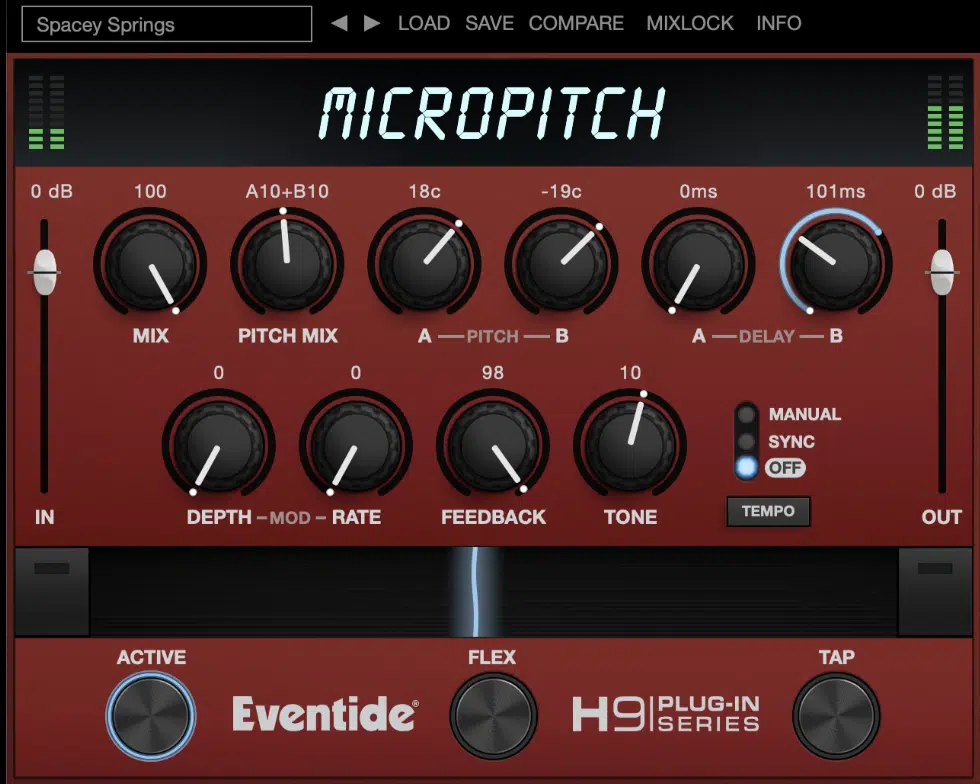
The Eventide MicroPitch takes the legendary pitch-shifting effects of the Eventide H3000 hardware unit and brings them into a digital workflow.
It does an epic job at keeping all the warmth and movement of classic analog gear.
Unlike basic pitch-shifters, it mimics the slight tuning fluctuations found in old-school hardware (perfect for natural vocal thickening, wide guitars, and cool synth textures).
For example, detuning the left channel by -3 cents and the right by +3 cents instantly creates the organic depth of a real double-tracked vocal.
The detune control is super precise too, letting you add anything from a subtle widening effect to a dramatic, warped chorus without introducing any phase issues.
A built-in delay section makes it even more flexible, adding independent echoes to each side, which is perfect for creating classic slapback effects that sound like old tape noise/delays.
The modulation controls bring in slight pitch drifts over time, so that can add some extra movement as well (keeping the sound feeling alive).
For example, setting a slow modulation rate on a synth pad can replicate the gentle detune of an aging analog synth oscillator.
On vocals, it adds that polished, stereo-enhanced sound heard in pro mixes, while on guitars, it can turn a basic lead into a lush, immersive tone.
Some producers might take time dialing in the perfect settings, but that’s what makes it powerful — it’s not a one-button effect, it’s a deep tool for shaping space and dimension.
If you want to give your sounds that Eventide-style width with all the analog movement of real pitch-shifting gear, MicroPitch is the way to go.
When it comes to the best analog emulation plugins, you do not want to overlook this one, that’s for sure.
Why It’s One of the Best Analog Emulation Plugins:
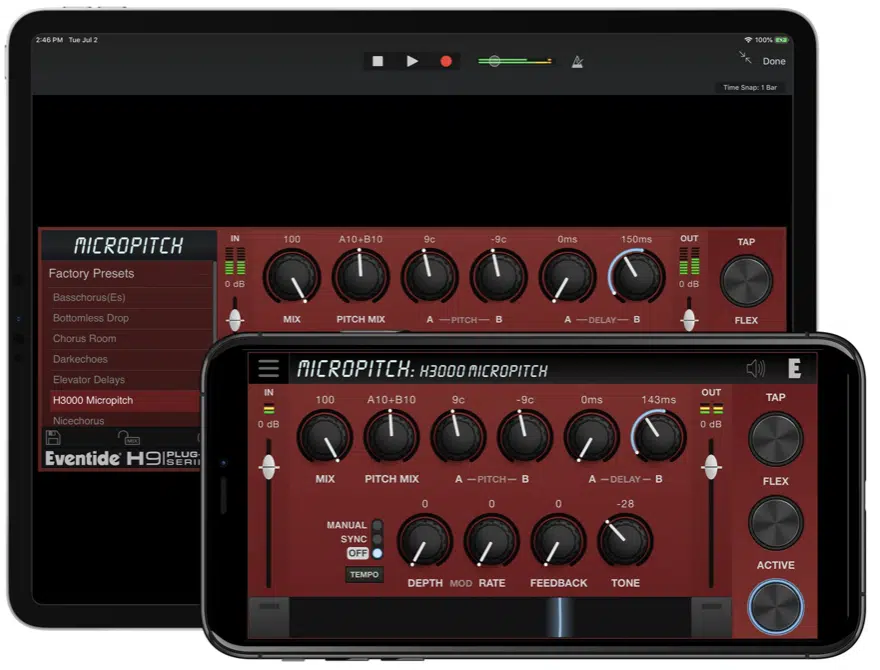
- Inspired by the legendary Eventide H3000, recreating its signature widening effects
- Dual pitch-shifters allow independent tuning of left and right channels for natural doubling
- Detune control enables subtle vocal thickening or extreme chorus-like pitch shifts
- Built-in delay section introduces slapback-style echoes with analog-style depth
- Modulation controls mimic real pitch drift, keeping sounds alive and organic
- Perfect for vocals, guitars, and synths, making them sit wider in a mix
- Excels at creating space and dimension without phasing issues
- One of the best analog emulation plugins around
#8. Waves SSL G-Equalizer (Equalization)

The Waves SSL G-Equalizer is a spot-on emulation of the SSL 4000 G Series console EQ, known for adding punch, clarity, and musical color.
Unlike super-clean digital EQs, this one adds a bit of harmonic saturation, so it can give your instruments and vocals that classic mix-console shine.
The four-band parametric EQ is super flexible, but the real magic is in the high and low shelves in my opinion, which shape the tone in a smooth but aggressive way.
For example, boosting the high shelf around 12kHz on a vocal adds a glossy top-end that feels polished and expensive.
Cutting around 300 Hz, on the other hand, removes muddiness without making the voice sound thin.
The pre-boost dip and pre-cut riseare subtle but super powerful, ensuring that boosted frequencies don’t become harsh and cut frequencies don’t make things sound hollow.
If you boost 100Hz on a kick drum, you’ll notice the plug-in dips just before it to prevent the low-end from becoming bloated (this is a classic SSL console trick).
Also, the broad Q settings make extreme EQ adjustments sound natural instead of surgical, which is why SSL EQs are used across so many mixes.
Whether you’re using it for subtle tonal shaping or aggressive frequency carving, it gives that punchy, radio-ready sound that’s impossible to fake with stock plugins.
If you want your mixes to have the same analog energy as classic SSL console recordings, this is one of the best analog emulation plugins around.
Why It’s One of the Best Analog Emulation Plugins:
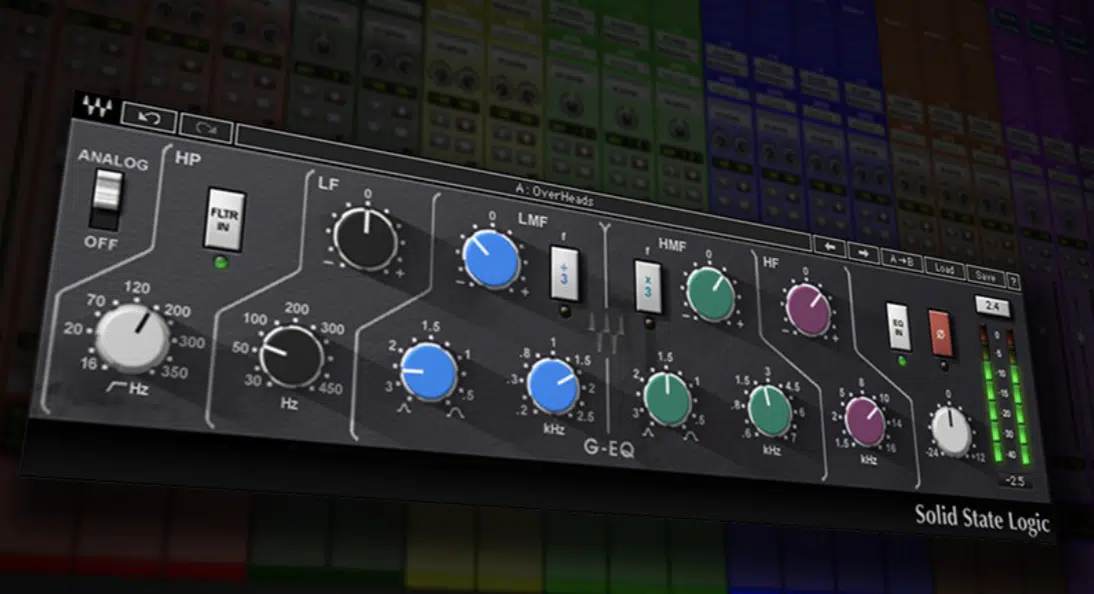
- Modeled after the legendary SSL 4000 G Series console EQ for mix-console character
- Pre-boost dip and pre-cut rise ensure smooth, natural frequency shaping
- Broad Q settings make extreme EQ moves sound organic
- Adds harmonic saturation to vocals, drums, and instruments for that classic SSL bite
- Perfect for shaping highs, carving mids, and controlling low-end punch
- One of the best analog emulation plugins around
#9. Soundtoys EchoBoy (Delay)
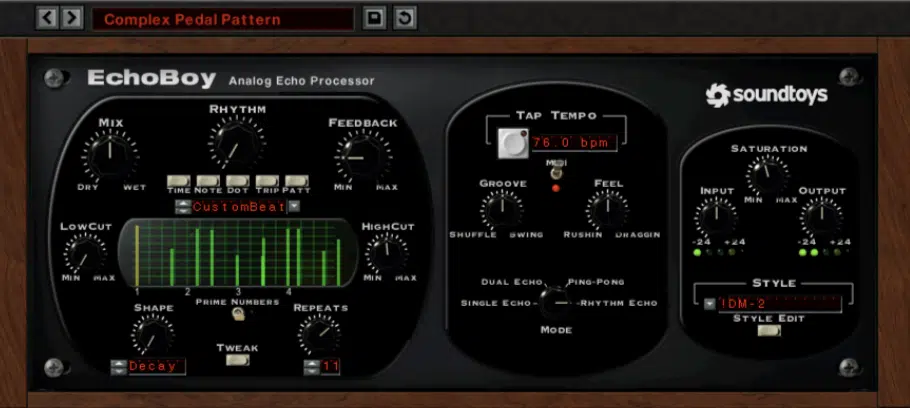
Soundtoys EchoBoy is a delay powerhouse that models 30 different vintage echo devices, from tape delays to analog bucket-brigade echoes.
Instead of just repeating a sound, it adds warmth, movement, and analog-style imperfections, making your delays actually feel alive in a crazy way.
The Rhythm Echo mode is my fav because it lets you program up to 16 taps, so echoes can groove with your track instead of just repeating evenly.
For example, setting it to a dotted eighth-note rhythm on a guitar lead instantly recreates the iconic U2-style delay effect.
The Groove and Feel controls are another secret weapon 一 pushing delays slightly ahead or behind the beat, just like an analog tape emulation/delay would naturally drift.
The Style Editor lets you tweak:
- Saturation
- Tape flutter
- Diffusion
This way, you can make the echoes sound like they’re coming from an old worn-out tape machine or a pristine studio delay unit (it’s awesome).
For example, adding tape saturation on a vocal delay makes the repeats darker and dirtier, just like a vintage Roland Space Echo would behave in a professional studio.
Unlike sterile digital delays, EchoBoy adds warmth and character, making it feel like you’re using a real piece of outboard gear instead of a plugin.
It’s actually one of my favorite plugins/analog emulation plugins around.
Why It’s One of the Best Analog Emulation Plugins:
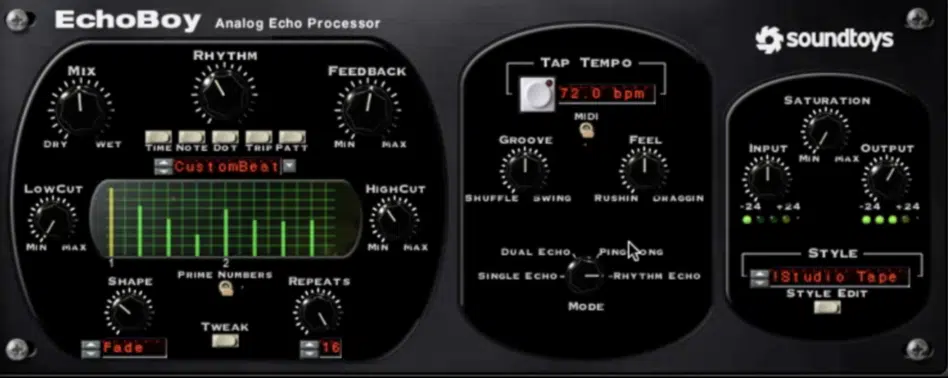
- 30 delay styles modeled after classic tape, analog, and digital units
- Rhythm Echo mode lets you program up to 16 taps for custom rhythmic delays
- Groove and Feel controls make echoes sit naturally in the mix, just like analog delays
- Saturation, flutter, and diffusion settings recreate real-world tape emulation/delay behavior (epic vintage sound)
- Perfect for vocals, guitars, synths, and drum busses
- One of the best analog emulation plugins around
#10. Waves Scheps Omni Channel 2 (Channel Strip)
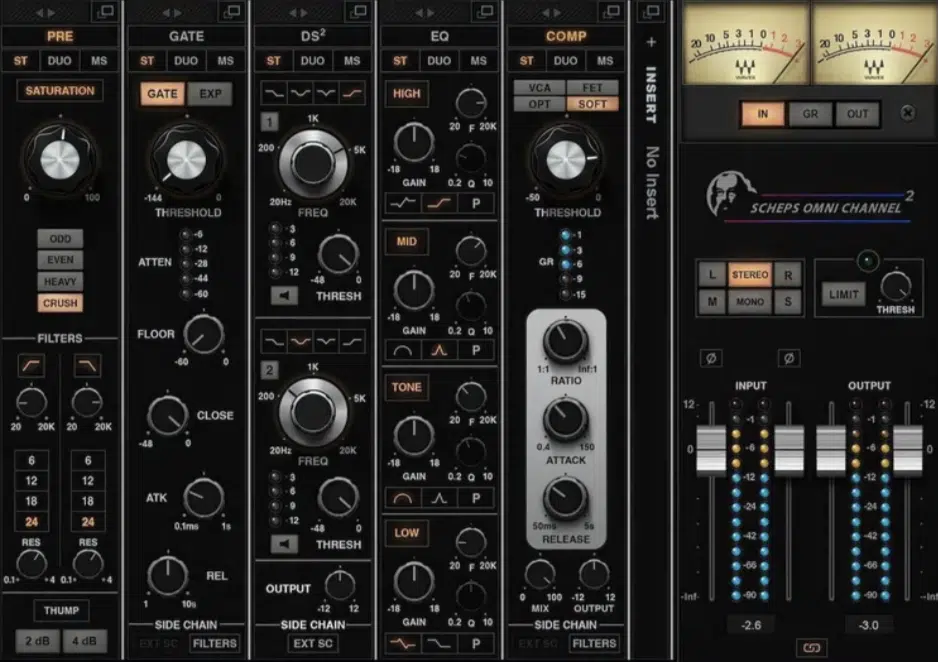
And last but certainly not least, we have Waves Scheps Omni Channel 2, which is a super intricate channel strip plugin that I personally love.
It brilliantly brings the workflow and flexibility of high-end analog consoles right into your DAW.
It’s one of the best channel strip plugins in the music industry/music production game.
Instead of being locked into a single signal chain, you can rearrange the modules, including preamp, EQ, compression, and gating, just like patching gear in a real studio.
One of the coolest features is the CRUSH preamp mode, which pushes signals into rich analog-style saturation that will blow your mind.
For example, if you want to add bite to a snare drum, dialing in the CRUSH mode at lower gain settings adds warmth.
And cranking it up brings in full-on distortion, just like pushing a vintage preamp into the red.
The 24dB-per-octave resonant filter is another great addition 一 letting you sculpt the tone with smooth low-end roll-offs or aggressive high-pass filtering.
If you’re working with a bass guitar that feels muddy, setting the resonant filter around 80Hz helps tighten it up while still preserving the punchy low-end presence.
Exactly like an analog EQ would.
Another awesome feature is the soft-knee compressor, which reacts more like an optical compressor, gently smoothing out vocals or guitars without squashing the life out of them.
For example, applying a low-ratio setting on a lead vocal adds that classic glue, which makes it sit naturally in the mix without sounding over-processed.
The insert slot is a game-changer, allowing you to load third-party VST3 plugins directly into the channel strip (just like inserting external hardware into an analog console).
The Focus presets, created by Andrew Scheps himself, make it easy to dial in professional-sounding settings.
Especially when it comes to vocal chains or drum bus processing.
It’s super intuitive and captures the warmth, control, and flexibility of analog gear while offering modern workflow enhancements that speed up mixing.
Side note, another one of the best analog emulation plugins would have to be Caelum Audio Tape Cassette, but I find it super outdated, but it is solid. Softube Tape is great as well, but these two will be in part 2.
Why It’s One of the Best Analog Emulation Plugins:
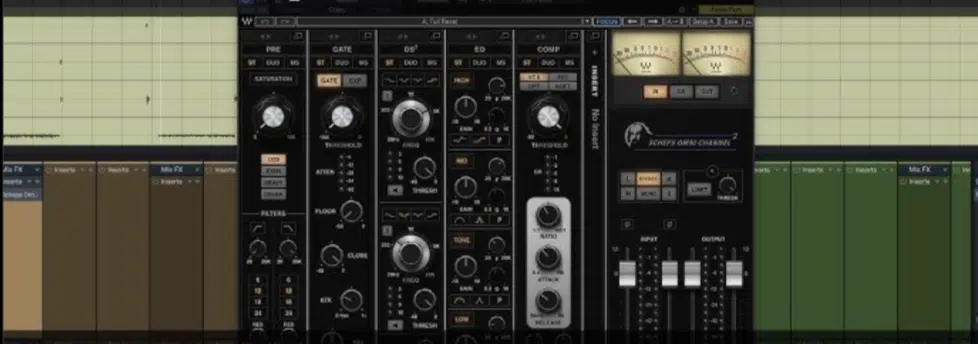
- Fully modular design lets you move and reorder modules like real analog hardware
- CRUSH preamp saturation adds rich, aggressive analog-style distortion
- 24dB-per-octave resonant filter shapes tone just like an old-school hardware EQ
- Soft-knee compression behaves like a vintage optical compressor for smooth leveling
- Insert slot allows third-party VST3 plugins to be used just like external analog processors
- Focus presets by Andrew Scheps offer pro-level starting points for mixing
- One of the best saturation plugins for vocals, drums, bass, and entire mix buses
- One of the best analog emulation plugins/channel strip plugins around
Final Thoughts
And there you have it: the absolute best analog emulation plugins in the game.
From epic tape saturation to mind-blowing vintage compressors, these emulations are built to bring warmth, character, and that classic analog feel to life.
Just don’t forget to use the tips, tricks, and techniques we broke down throughout the article today, because they’re key.
They’ll help you dial in your settings, shape your sound, and maximize the power of these plugins to get the most authentic analog vibe possible.
And it doesn’t matter which one of the best analog emulation plugins you decide to use because all of them are on point.
So, when it comes to adding harmonic richness, controlling dynamics naturally, and shaping your tracks with real analog character, each one of these analog emulation plugins have your back.
Plus, you’ll be able to smooth out harsh frequencies, glue your mix together, and add that polished, professional touch that makes all the difference.
And, as a special bonus, you’ve got to check out this legendary Free LoFi Sample Pack that’s taking over the industry right now.
It includes 60+ free LoFi samples, loops & MIDIs that will help make your beats sound professional and placement-ready every single time.
They have that old-school, dusty vinyl vibe 一 making them perfect to use alongside the best analog emulation plugins for an even more organic, vintage sound.
These samples were inspired by A$AP Rocky, J. Cole, Earl Sweatshirt, and more, so they’re perfect for knocking out textured, nostalgic beats that stand out.
Your tracks will instantly have more warmth, grit, and personality.
And, since they were created by some of the best sound designers in the game, they’re industry-quality and 100% royalty-free, so use them however you want.
Bottom line, when it comes to the amazing analog emulation plugins we talked about today, you’ll have everything you need to take your mixes to the next level.
Just don’t forget to experiment with saturation levels, dial in your EQ curves, and tweak your compression settings to match the energy of your track.
This way, you’ll be able to capture that rich, organic analog sound and create mixes that sound professional (and authentic) from start to finish.
Until next time…






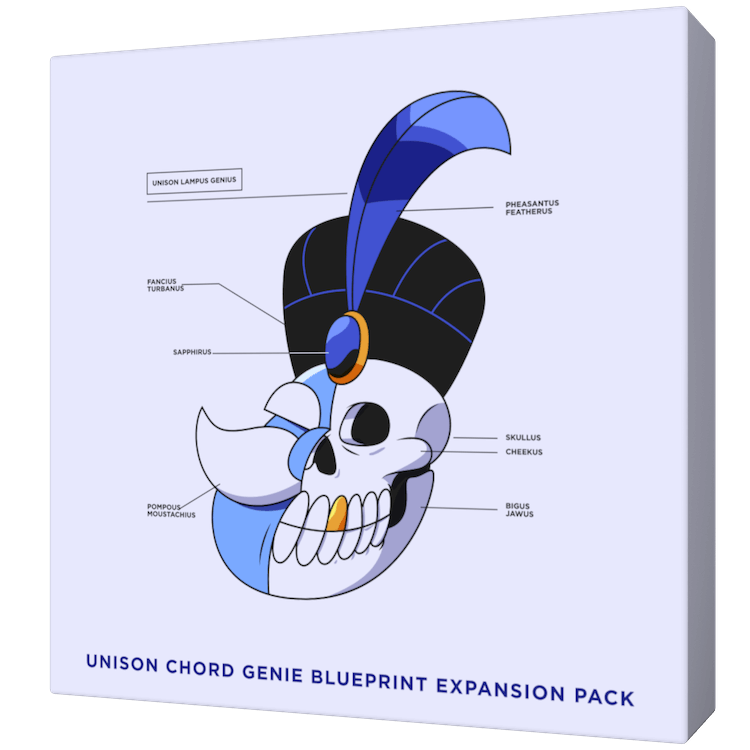
Leave a Reply
You must belogged in to post a comment.